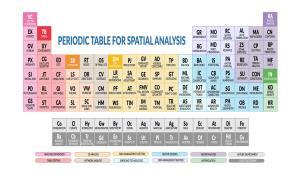What Is Central Place Theory?

DEFINITION:
Central Place Theory is a geographic theory that explains why and where cities, towns, and villages are located in relation to each other.
The Central Place Theory
Central Place Theory (CPT) is a way to understand why cities and towns are where they are. Walter Christaller developed this theory in the 1930s.
The theory says places are set up to offer services to those around them. Think of a small town with a grocery store. This store is there because people nearby need food.
Larger cities have more services, like hospitals, because more people can reach them. Christaller used a pattern of hexagons to show how towns and cities spread out. The hexagons help explain why places are a certain distance from each other.
The theory also talks about range and threshold. Range is how far you’ll travel for a service and is closely related to distance decay. The threshold is the minimum number of people needed for a service to exist. So, a cinema needs a lot of people, but a bakery needs fewer.
Central Place Theory in Urban Planning

As part of the Central Place Theory, “location, location, location” translates to “access, access, access”. Urban planners use it to help figure out the best places for cities and services.
The theory uses hexagon binning to map out how cities and towns spread. This shape helps evenly distribute services across an area. Big cities have lots of services, attracting more people. Smaller towns offer fewer services and draw fewer people.
Planners consider this theory to decide where to put new services. They think about the range, or how far people will travel for a service. They also consider the threshold, or the least number of people needed for a service to exist.
Assumptions of Central Place Theory
So, the Central Place Theory guides the growth of urban areas. It ensures people have access to the services they need, like shops and hospitals.
Here are some of the assumptions that Walter Christaller uses in his theory:
- Homogeneous landscape with no physical barriers, allowing movement in all directions.
- Resources and population are evenly distributed across the landscape.
- Transportation costs are directly related to distance.
- Central places serve as market centers for surrounding areas, providing goods and services.
- There is a hierarchy of goods and services.
- Perfect competition between sellers and buyers.
- Hexagons represent the most efficient market area shape without gaps.
These assumptions help in understanding the spatial organization of urban and rural areas.
Central Place Theory in GIS
Despite its simplifications, CPT still provides a framework for understanding the distribution and functions of urban centers. In GIS, the Central Place Theory helps map and analyze spatial patterns of urban development.

GIS has more sophisticated urban planning tools. First, the Huff Gravity Model predicts retail location attractiveness based on distance and size. Secondly, drive-time maps visualize accessibility based on driving time to locations. Finally, the location-allocation tool finds the most optimal location to build anything.
GIS can model the theory’s hexagonal patterns, showing where services might be missing or overcrowded. This allows planners to find opportunities or improve infrastructure and services.
Christaller’s Central Place Theory
Christaller’s Central Place Theory attempts to explain why some towns have more stores and services than others. For example, big cities have lots of different shops because they attract more people. While smaller towns might only have the basics, like a grocery store.
The theory uses hexagons to map where new services are needed. So, when planners are thinking about where to build something new, they use this theory to help them decide. It’s all about making sure people have what they need close by.
But, we have to remember, things have changed since Christaller’s time. CPT has a lot of assumptions, which can change how we use this idea. Yet, his theory still helps us understand the basics of why cities and towns are the way they are.








